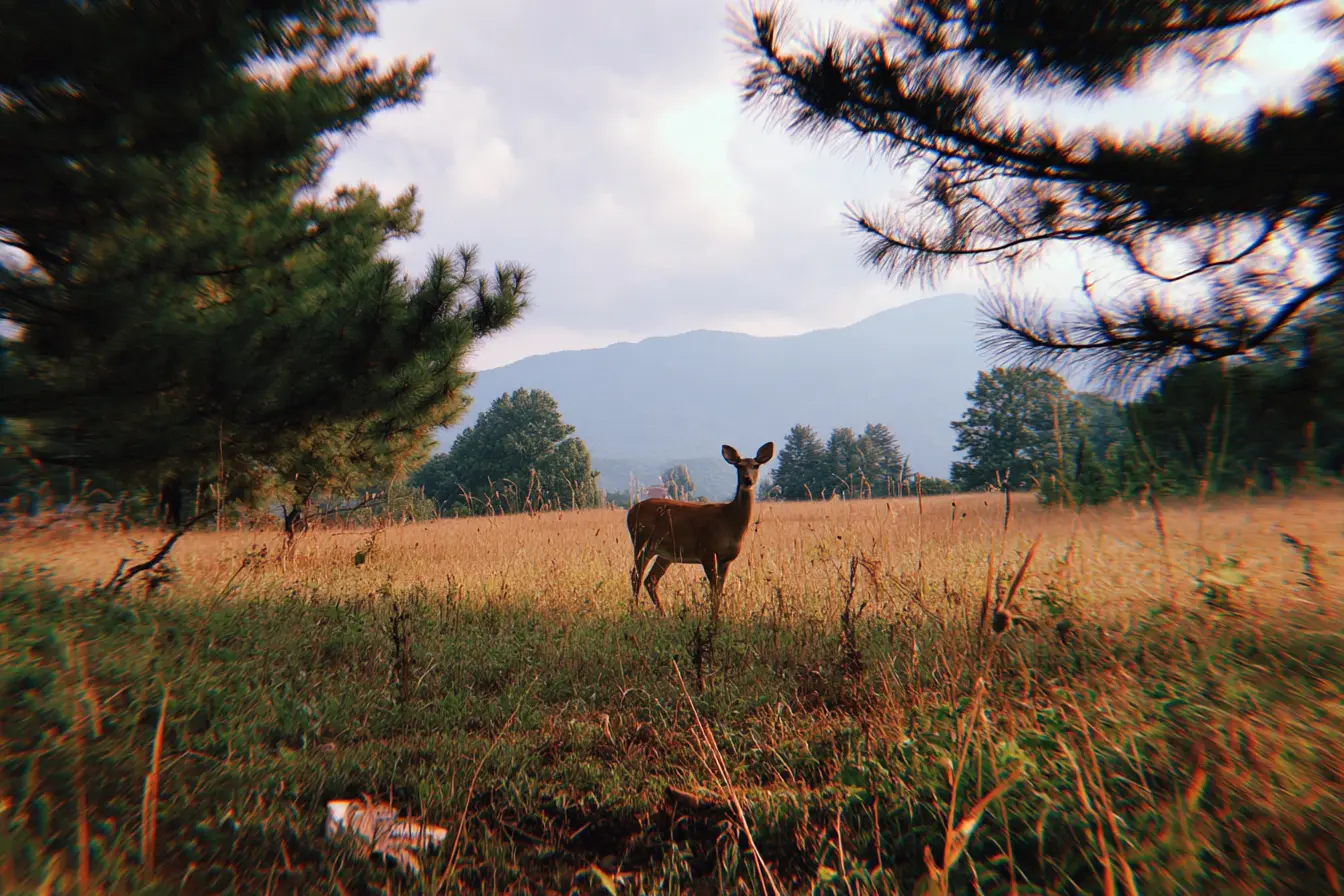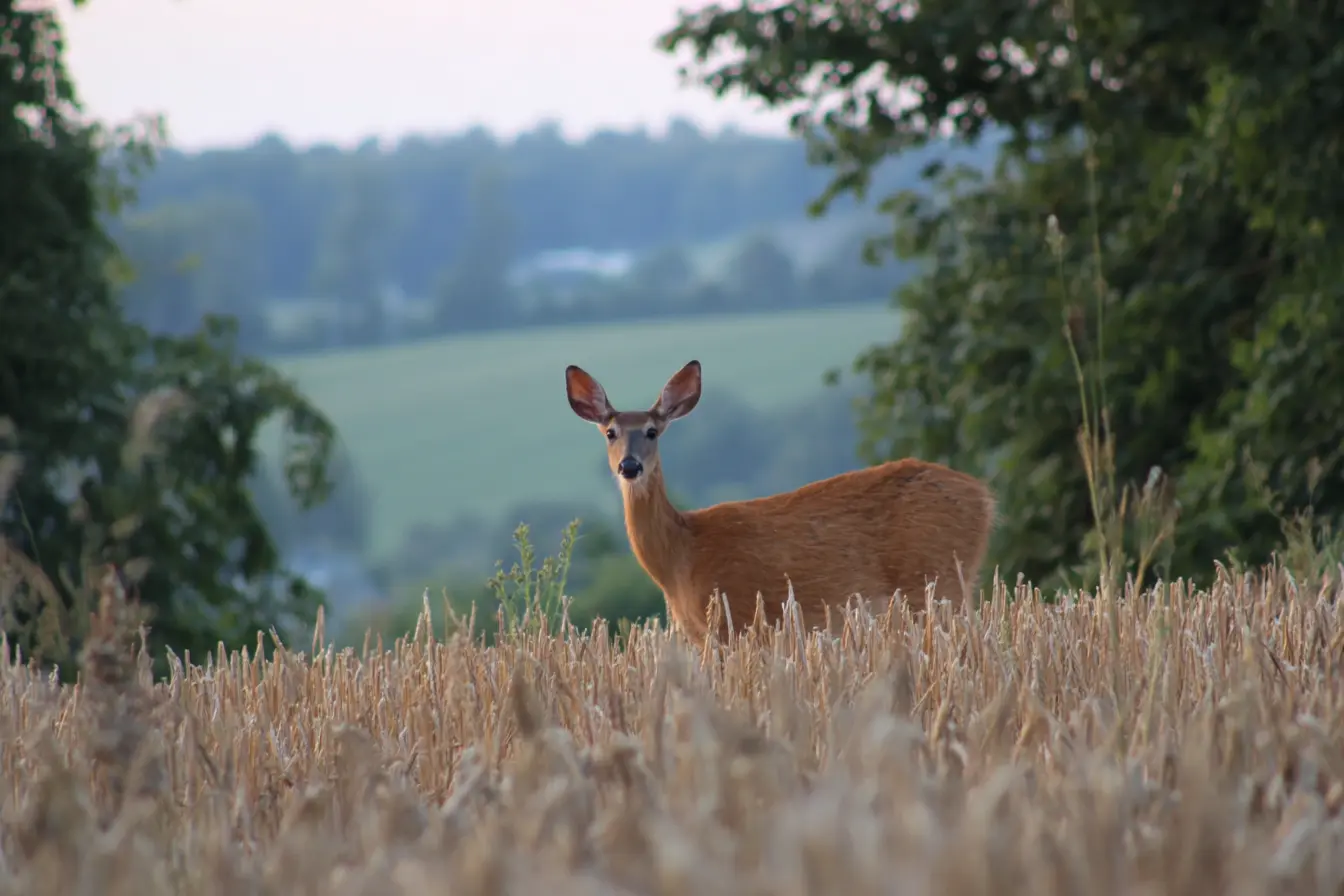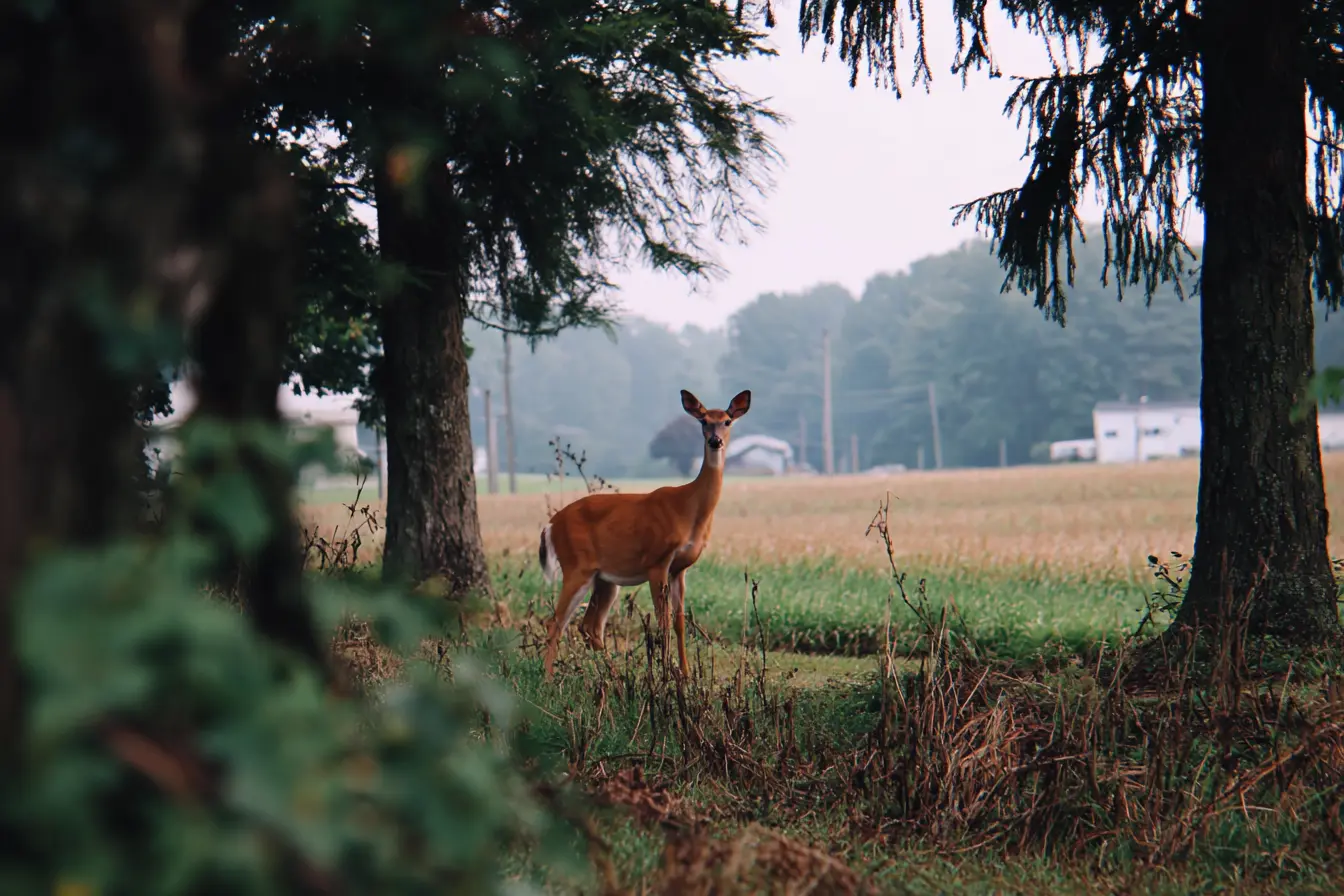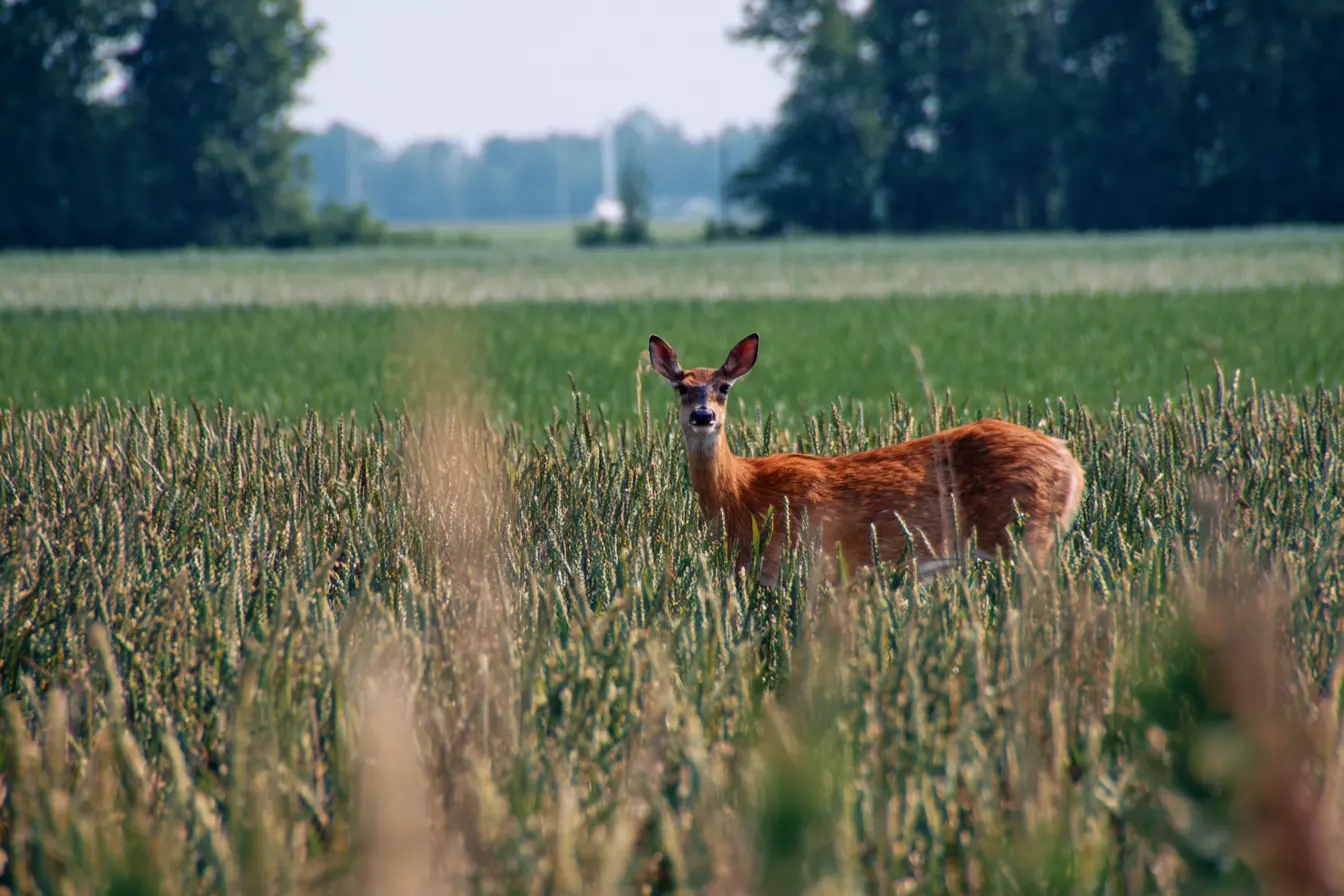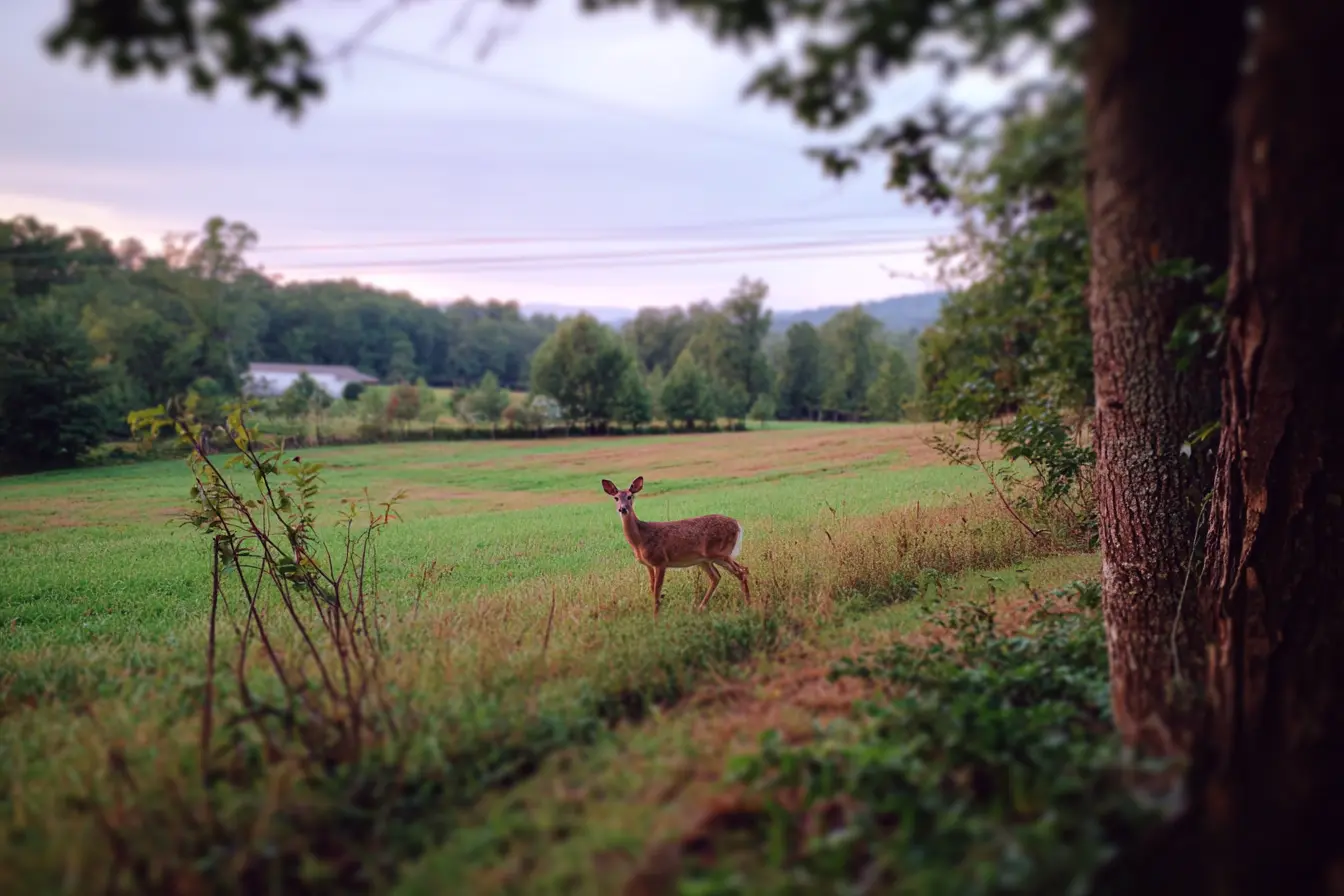
Managing Deer Presence and Livestock Disease Risks in the UK
The presence of wild deer is a distinctive and often celebrated part of the British countryside. But as their numbers have risen in recent decades, concerns have grown about the potential risks deer pose to livestock health and farm biosecurity. In this blog post, we’ll explore how deer can contribute to disease risks for grazing animals, why these issues matter, and what steps farmers can take to protect the health of their livestock.
An Increasing Interface Between Deer and Livestock
Deer are now found across much of the UK, from the rolling hills of Scotland to the lowland woodlands of southern England. Populations of species such as red, roe, fallow and muntjac have grown significantly, often bringing deer into closer contact with farmland.
This growing overlap between wild deer and domesticated livestock creates more opportunities for disease transmission, whether directly through shared grazing or indirectly through contamination of pastures and water sources.
Disease Risks: What Are the Concerns?
While deer do not pose the same level of disease risk as some wildlife (such as badgers in the case of bovine TB), they can still play a role in transmitting certain parasites and infections to farm animals. The main concerns include:
Liver Fluke (Fasciola hepatica)
Liver fluke is a parasitic flatworm that infects the livers of grazing animals, including sheep and cattle. The parasite’s complex life cycle involves snails as an intermediate host, with wet, marshy areas providing ideal conditions for transmission.
Deer can act as reservoir hosts for liver fluke, shedding parasite eggs in their droppings and contaminating pastures and watercourses. When livestock graze on these contaminated areas, they risk infection, which can reduce growth rates, cause liver damage, and lead to economic losses for farmers.
Other Gastrointestinal Parasites
Deer can also carry a range of gastrointestinal worms and parasites that are shared with livestock, such as certain strongyle-type worms. While generally less severe than liver fluke, these parasites can still contribute to a decline in livestock performance and welfare.
Bovine Tuberculosis (bTB)
Bovine TB is a complex disease with a major impact on cattle farming in the UK. While badgers are the main wildlife reservoir of bTB, deer—particularly in high-prevalence areas—can also become infected. The risk of deer acting as a significant source of infection to cattle remains a subject of ongoing research, but it underscores the need for vigilance where deer and cattle share pasture.
Johne’s Disease
Some studies suggest that deer can carry the bacteria that causes Johne’s disease, a chronic wasting condition in ruminants. While the risk of transmission from deer to livestock is considered low compared to other livestock, the potential for cross-species infection remains an area of interest.
Managing the Risk: Practical Steps for Farmers
Given the potential disease risks associated with deer, it’s essential for farmers to integrate wildlife considerations into their farm management plans. Here are some practical measures:
- Fencing and Barriers: Installing deer-proof fencing around vulnerable fields and watercourses can help reduce direct contact between deer and livestock.
- Water Source Management: Providing clean, controlled water sources for livestock can limit their exposure to water contaminated by wildlife.
- Pasture Management: Rotating grazing and avoiding high-risk wet pastures during peak snail activity can reduce liver fluke transmission.
- Monitoring and Testing: Regular screening for parasites in livestock and wildlife populations can help identify problems early.
- Collaboration: Working with local deer management groups can help reduce deer numbers and the associated disease risks in high-pressure areas.
Policy and Research
Government agencies and research institutions continue to monitor the potential role of deer in disease transmission. Defra’s work on sustainable deer management and the broader national conversation around wildlife-livestock interfaces are important steps towards balancing conservation with livestock health.
At the farm level, staying up to date with veterinary advice and participating in disease surveillance schemes can help farmers protect their livestock and reduce the hidden costs of disease in their herds.
Conclusion
Deer are a treasured part of the UK’s natural heritage, but as their populations grow, they can have unintended consequences for livestock farming. While the disease risks are generally lower than for other wildlife, liver fluke and parasitic infections in particular are important concerns for many farmers.
By combining practical biosecurity measures with good pasture management and collaboration with deer managers, farmers can safeguard the health of their livestock and maintain the balance between wildlife and farming in our shared landscapes.
Vets near you
Speciality vets
- Aquatics vet specialists
- Birds vet specialists
- Camelids vet specialists
- Cats vet specialists
- Cattle vet specialists
- Deer vet specialists
- Dogs vet specialists
- Equines vet specialists
- Exotic vet specialists
- Goats vet specialists
- Pigs vet specialists
- Poultry vet specialists
- Sheep vet specialists
- Small Mammals vet specialists
- Wild vet specialists
